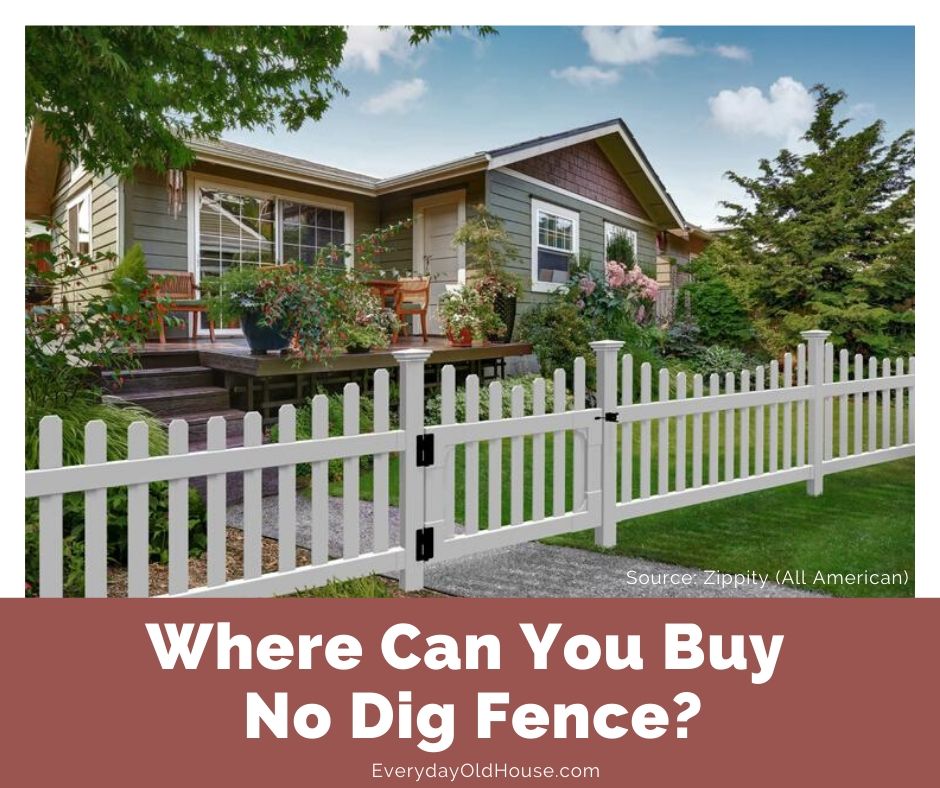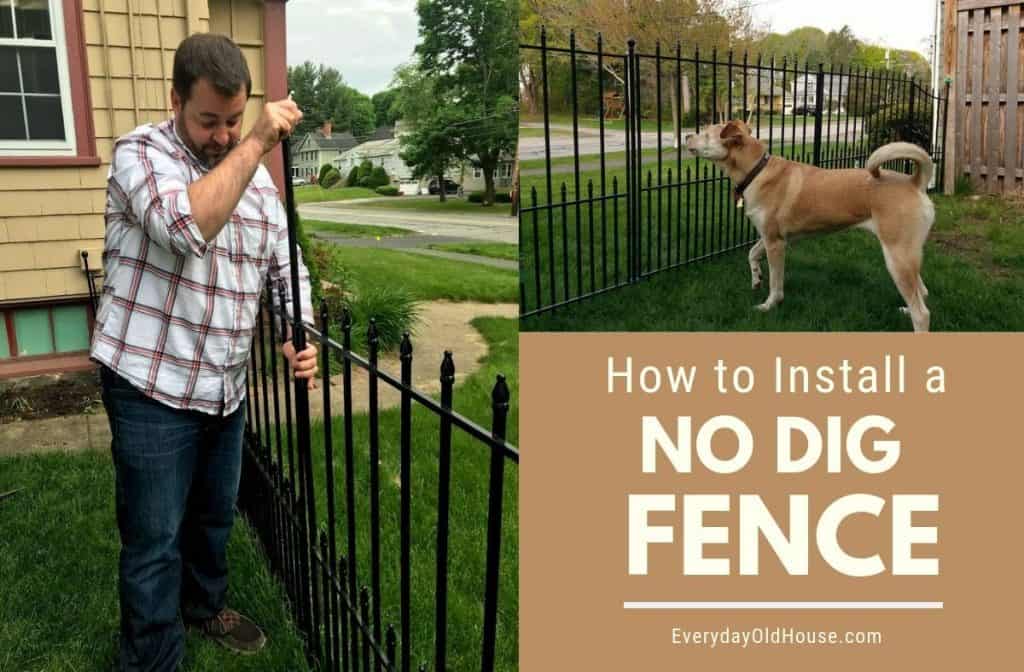Installing a fence is the perfect way to instantly add curb appeal and delineate your property line. Traditional fences, the ones that require digging trenches and setting posts, have been the go-to for ages. However, an alternative – No Dig fence – is quickly growing in popularity among homeowners. We installed No Dig fence in our backyard a few years ago and haven’t looked back. Here’s the pros and cons of No Dig fencing to decide if it’s right for your home.

Backstory
A few years ago, we needed to fence in our backyard to corral our dog and young children. Luckily, our abutting neighbors already had fencing. Therefore, the majority of our backyard was already fenced in. So we only had to deal with fencing two smaller portions of our yard.
As we researched ways to easily (and relatively inexpensively) fence in these portions, we came across No Dig fencing.
We decided to give it a try and 4 years later I can attest – it has worked amazingly! We have had zero issues.
What is No Dig Fencing?
Traditional fencing relies on auguring and cementing posts, which can involve a lot of time, energy, and mess. But No Dig fencing does it differently. Instead, it uses an innovative fence design that requires driving spikes deep into the ground through hammering or pounding.
No digging holes + No pouring concrete = Less time + No tearing up your yard
And how can you not love that?
The dig fence installation method can differ by manufacturer and model, but all are fairly straight-forward. For example, below is a visual of Yardlink’s method of installing their cedar wooden fences.
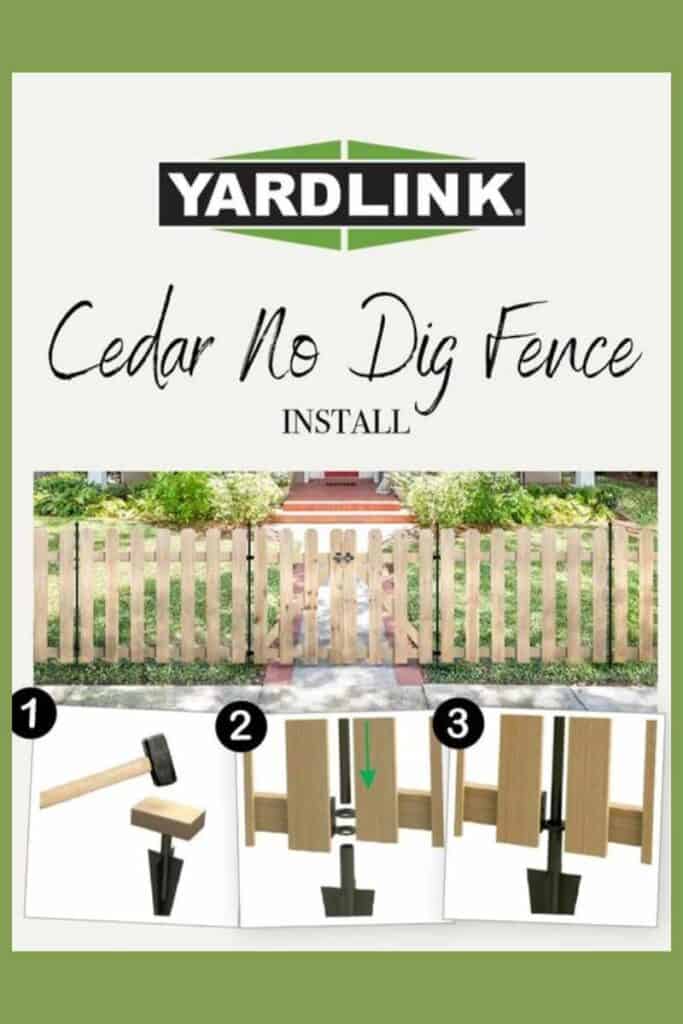
Pros of No Dig Fencing
There are several benefits of No Dig fencing that make them so popular.
1. DIY Easy Installation
Installation is so simple it doesn’t require a contractor. You don’t need to get on a fence contractor’s waitlist (which seems incredibly long these days) and pay installation fees (aka no labor costs). Installing No Dig Fence is an ideal DIY project. You can install it by yourself – and on your own schedule.
In our experience, installing No Dig fencing was fairly easy. Pound in the fence posts, and connect the panels. Sure, there was a few installation challenges (which you can read more about here), but overall it was a quick and relatively painless process.
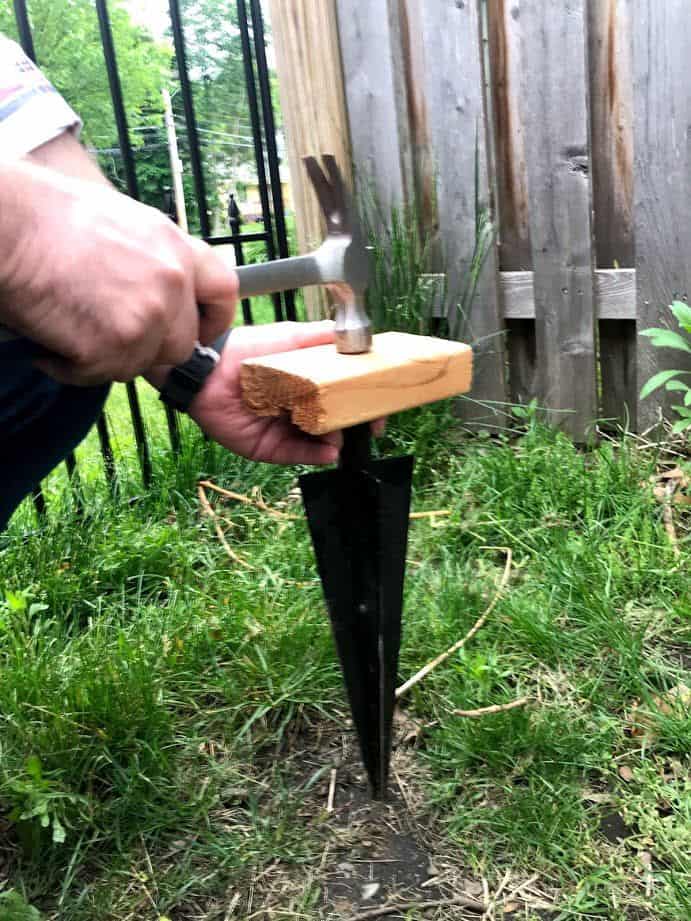
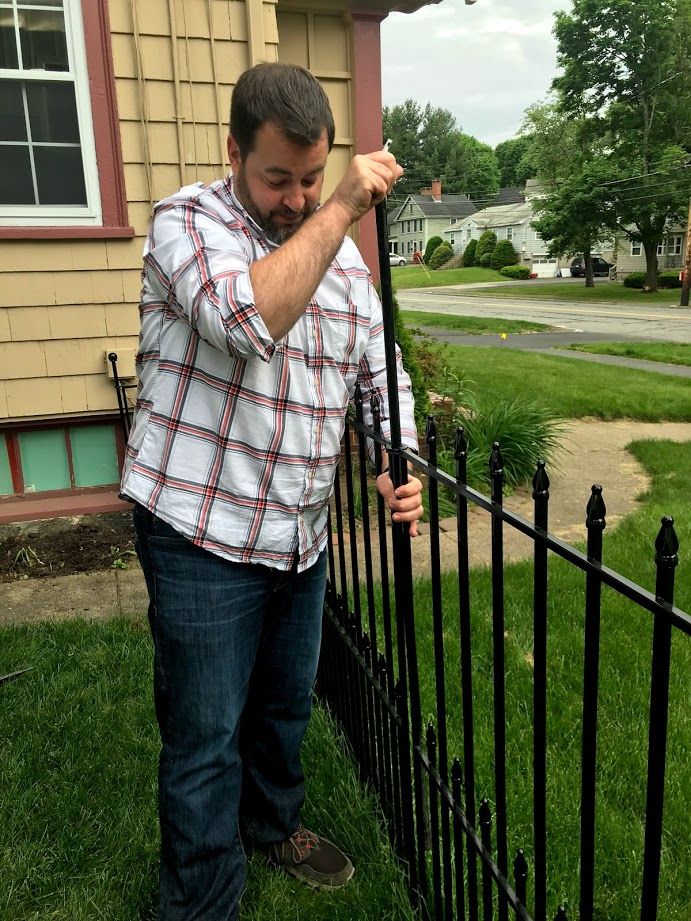
2. Remarkably Sturdy
Admittedly, No Dig fences aren’t as sturdy as a traditional concrete-poured fence. BUT the sturdiness of these fences is still incredibly impressive, even for dog owners. For example, here’s our dog, Dulce. All 80 pounds of love, fur, and energy.

When other dogs walk by our front yard, she gets excited and jumps up. Jumps up on our No Dig fence. (And since we live on a main street, the “excitement” happens several times a day.)
Does the No Dig fence sway? Sure it does. But just a bit. The fence holds. She’s never pushed over our No Dig fence in the 4 years it’s been up. (Knock on wood!)
And it’s not just me that thinks these fences are sturdy. Some No Dig fence manufacturers, like WamBam, stand behind their product in tougher weather, rating them to hold up in Category 1 hurricanes.
I’ll even admit to putting some stress on my Yardlink fence and it still holding sturdy. Last year I secured the trellises for my cucumbers and spaghetti squash growing in a garden raised bed to our fence. I didn’ expect to have such an incredible growing season
My No Dig fence held with no issues.

3. Variety of Fence Materials & Styles
When we bought our No Dig fence three years ago, there were just a handful of options. But No Dig fencing has come a long way in a short time.
As further detailed in Where to Buy No Dig Fence, there appear to be 3 major manufacturers: WamBam, Yardlink/ Ironcraft, and Zippity. We have a Yardlink/ Iron craft fence and we love it.
And these manufacturers offer a wide choice of fence materials and styles, including:
- Aluminum
- Vinyl
- Steel
- Cedar wood
- Chain link
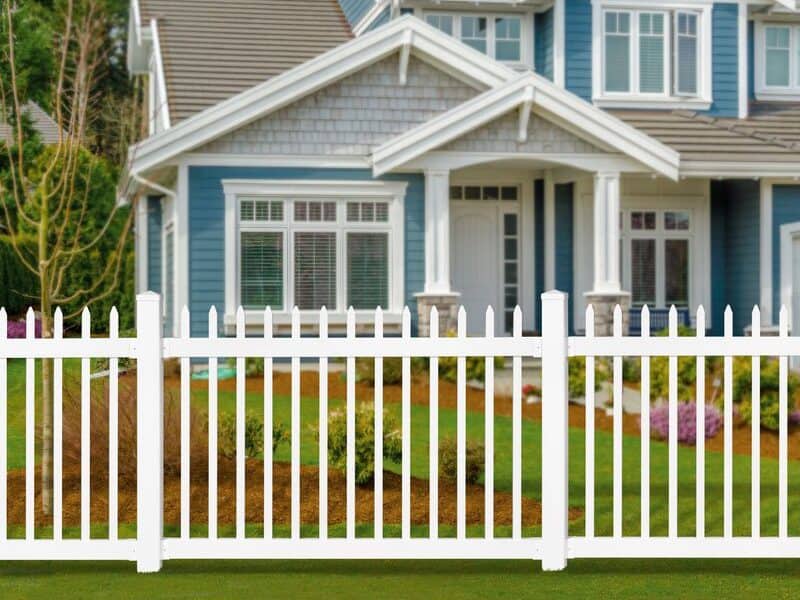
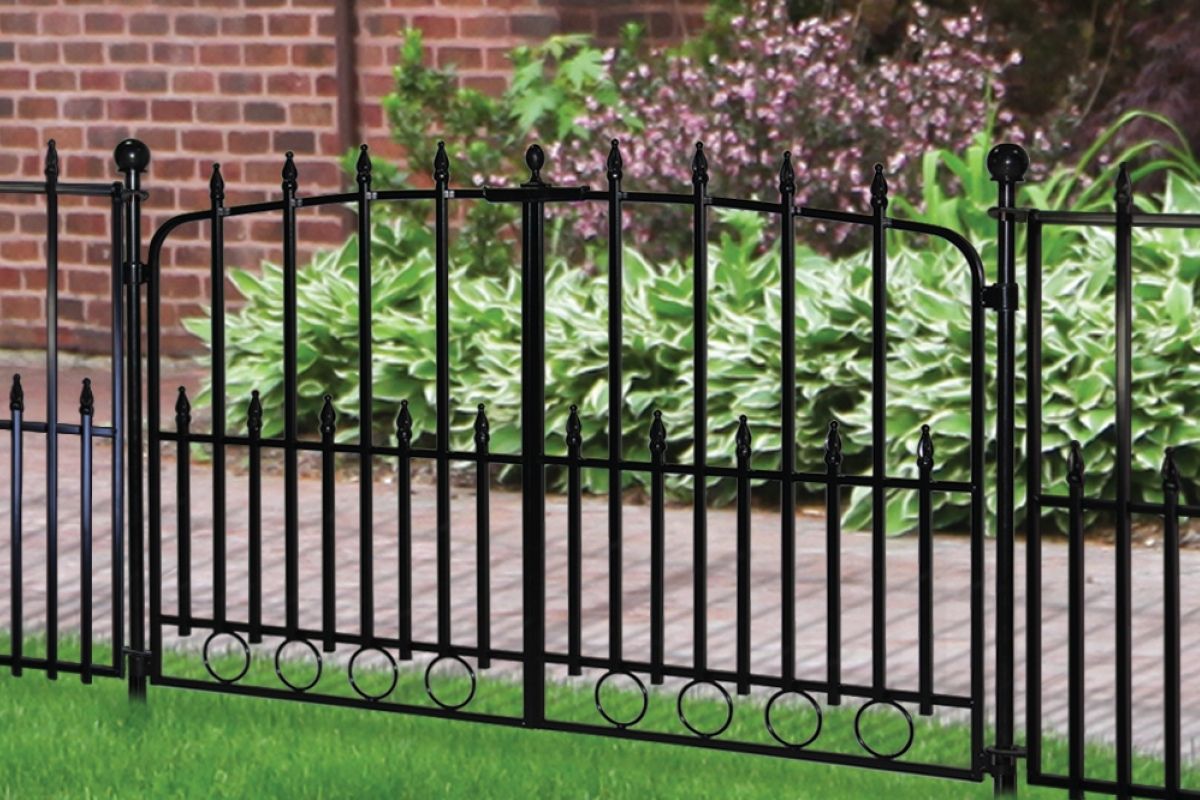

Personally, while I love my Yardlink steel fence, I absolutely love the look of some of the newer fence materials (for example, there were no cedar wooden fences). Oh well – I’ll install a new fence at my next house.
4. Easy to Remove
Speaking of moving, unlike most other fencing, you can take No Dig fence with you to your new abode. This fencing is relatively easy to remove and install in the next house. (Note that you might have to buy some new parts, like spikes or new posts, depending on your model).
Similarly, No Dig fencing is also a great option if you are just renting your home or need fencing on a semi-temporary basis. Perhaps you only need to fence in your area on a temporary basis, for example corralling your toddler children until grow old enough to understand boundaries.
5. Low Maintenance
Most No Dig fences require minimal maintenance. For example, a No Dig vinyl fence only need an occasional rinse with a garden hose to wash off dirt (maybe with a light scrub with a mild detergent).
And if you happen to run into any issues, some manufacturers (like Yardlink) stand by their products with 5-year warranties. When we had an issue with our gate’s lock, we were impressed with how quickly and easily Yardlink addressed the issue and sent a free replacement.
6. Minimal Disruption
Since there’s no need for significant digging, you won’t disrupt the soil or landscaping around your property. This can be particularly advantageous if you have well-established gardens, trees, or other landscaping features you want to preserve.
Cons of No Dig Fencing
We personally have had a great experience with our No Dig Yardlink fence. And while I highly recommend No Dig fencing, there are some disadvantages…..
1. Lack of Privacy
Most No Dig fence panels aren’t ideal for privacy. (Note that I said “most”. Read on….)
First, fence height. No Dig fencing panels are on the shorter side. Based on my review of No Dig fencing currently on the market, the majority of No Dig fence panels are only 3-4 feet high. A handful go over 4 feet. Not terribly tall.
Second, most panels are designed so that it’s easily to see through. Want to hide from your neighbors? Most No Dig fencing styles won’t work. But if you like a fence that with an airy feel, then it’s perfect.
OK – here’s the exception…. There ARE 3 viable No Dig fence options if you are looking for maximum privacy (in my opinion). These are offered through WamBam (Curious George, Peeping Tom, and Steady Freddy) and are all vinyl fence.
These panels (see picture below) have minimal horizontal gaps and reach a 6 feet. Think the “nose-up” view pictured below – Tim Taylor’s neighbor Wilson from the tv show Home Improvement.

2. Limited Panel Lengths
Like most pre-made fencing, No Dig fencing panels are available in certain lengths. But No Dig fencing has even more limited length options. The problem? If you are trying to fence between established fence lines or structures, it’s highly unlikely that the panels will perfectly fill the gap.
To address this concern, some manufacturers do offer narrow panels (commonly called “transition” or “end” units), which are handy to bridge gaps, like the one below. The panel is 54″ wide, while this transition unit is about 23″ wide (we have this particular one in our yard).
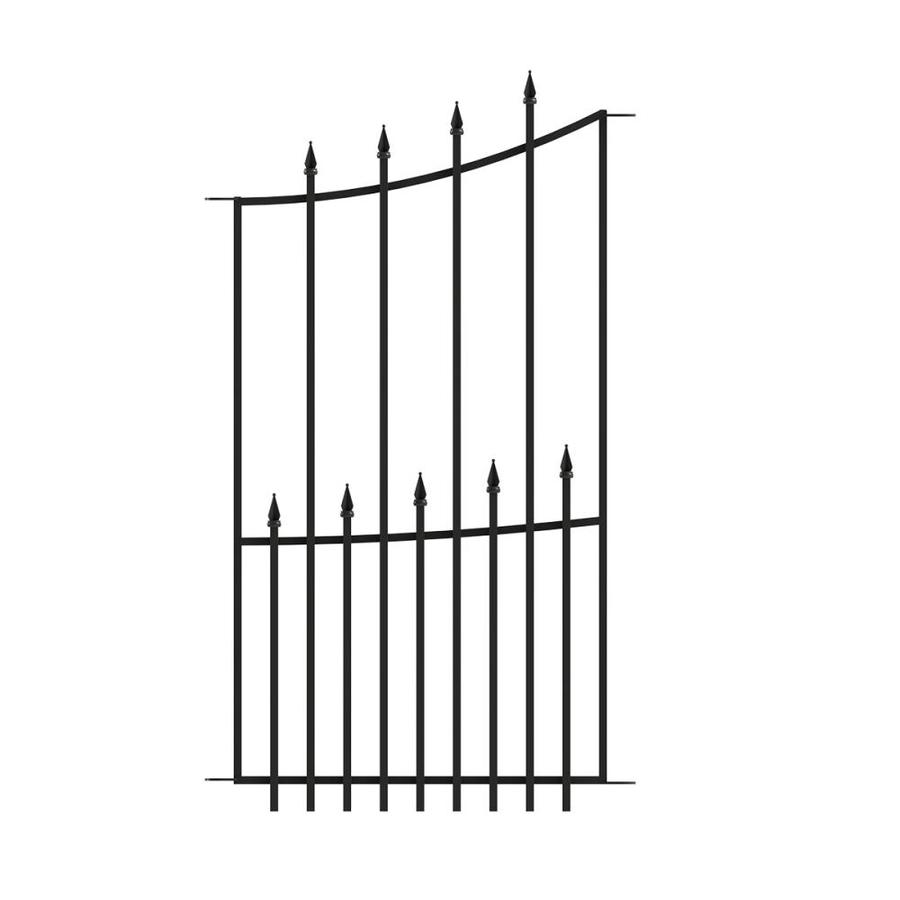
However, even with these shorter panels, it’s still sometimes difficult to completely close gaps. For example, we still have about 6″ gap between our fence and house. It’s narrow enough that our dog (and children) can’t sneak through. Unfortunately, this gap is a welcome mat for little critters (especially rabbits to hop right through and munch my flowers.
Note that for some fence materials, cutting is an option, especially vinyl fence. For example, Zippity gives guidance here on how to cut their products. But for the steel fences like ours, cutting is not an option.
3. Not Suitable for All Soil Types
While No Dig fences are designed to be installed without digging, they still require stable ground for proper installation. Rocky or extremely hard soil may pose challenges and affect the stability of the fence.
I would imagine that soil with a lot of rocks or sand would be rare in the typical homeowner yard, I would be remiss if I didn’t mention to ensure your soil is able to hold a No Dig fence post securely.
Wrapping It Up
As with all fencing, No Dig fencing has its pros and cons. For our home and family, No Dig fence was the perfect choice – affordable, easy to install, and added instant curb appeal.
Related Posts
Want to be the first to know about new posts? Be sure to follow me on Pinterest, Facebook, Instagram or Twitter of even Etsy! Or better yet… Subscribe below!
My monthly (admittedly sometimes more, sometimes less….) emails are like receiving a unexpected letter from an old friend WITHOUT needing to put on your slippers and walk out to your mailbox…. See? I got ya, my friend!)
[Note: My posts are proudly connected to these amazing link parties full of DIY ideas and inspiration!]
